The Moustache Samedi 27 X2 is a two-person electric mountain bike that can be modified for efficient road use by locking the suspension fork and switching to slick tires. The company sells an optional rear rack and fenders might also be a possibility, but it’s not as lightweight or efficient as a true road tandem. This bike comes in one frame size and one color option, but offers good seat height and stem adjustability… check the stand over heights listed above in the specs to ensure that you and your partner can adequately mount and handle this ~68.2 lb ebike. I got some help and perspective for this review from a German ebike enthusiast named Frankie (an employee at Motostrano in Redwood City, California) who has toured all over Europe and done some competitive non-electric tandem rides. He explained that the two rider positions on the bike are referred to as the captain (front) and stoker (rear), and that the stoker should always keep their feet up on the pedals to remain safe when starting and stopping. They should follow the captain’s lead and continue spinning even if they are not pushing very much. I took the stoker position for the ride tests, so I could focus on filming, and realized that only the captain can switch gears, activate the brakes, and interact with the display panel. There’s a lot of trust that goes into riding a tandem but you benefit from mechanical efficiencies and aerodynamics as if you were drafting. The captain position also benefits from a bottle cage mounting point on the downtube whereas the stoker might need to get an adapter like this to use for fluids. It’s one of the compromises that I noticed based on where the two battery packs are mounted in the rear section of frame. The Samedi 27 X2 emphasizes comfort and ergonomics for both riders through the use of a 140 mm RockShox Yari air fork and mid-level SR Suntour suspension seat post. When combined with the higher volume “plus sized” 2.8″ tires, the bike feels smooth. These larger tires have become popular for electric mountain bikes in recent years because they reduce deflection when riding over rocks and increase float over soft terrain… they also increase weight and drag due to the larger surface contact but this is more than overcome by electric assist. For a tandem ebike application like the Samedi 27 X2, the increased footprint of these larger tires helps to spread out weight. What you from the Moustache Samedi 27 X2 is a thoughtfully engineered bike that is more than capable of cross country and light trail riding with plenty of torque power, efficiency, and long range thanks to the Bosch drive system and dual-battery setup. The 11-speed SRAM NX drivetrain and smaller 14 tooth Bosch chainring make climbing a breeze and there’s plenty of options for pedaling up to and even beyond the maximum assisted speed of 20 mph. You do pay a premium for this e-bike at $6.7k, but the hardware and components are very nice, the price tag is roughly equivalent to that of two Bosch powered single-person electric bikes… and you get the same excellent two-year Bosch warranty and dealer support here. With removable batteries and quick release wheels, you could significantly lighten the bike for repairs, lifting, transport, and storage (taking it down by ~20 lbs) and I was told that many people either use a truck or the roof of their car to move this sort of bike.
Driving the Samedi X2 is an internally geared centerdrive motor from Bosch. This is their highest power mountain bike specific Performance Line CX drive unit which can produce 500+ watts and up to 75 Newton meters of torque. If you shift gears thoughtfully, there isn’t a hill this motor won’t climb and I usually find myself losing traction vs. losing assist support when I have tested it on rigorous mountain trails in the past. For a two person ebike, I think it was definitely the right motor choice, but there are some trade-offs. This motor uses energy more quickly than the standard Performance Line and Active Line units and it produces more noise as well. In practice, especially on gravel and trail type terrain, the noise of the motor is mostly obscured by the knobby tires and wind… but it is there. You get four levels of assist and the higher you go, the more zippy but also noisy the motor performs. One thing that always impresses me about this motor is how quickly it responds to pedal input. The motor controller listens for rear wheel speed, pedal cadence, and pedal torque over one thousand times per second! And with the CX motor, you can have the software upgraded to include an eMTB drive mode which relies strongly on torque signals for 120% to 300% output. This mode is ideal for mountain biking because it allows you to focus on balance, gear shifting, pedaling, and braking. On a tandem model, the balance factor can become even more complex and communication is also introduced. In short, the motor does a great job and is complimented by super high-end downhill style brakes with 200 mm rotors and quad-piston calipers. You should experience quick and controlled starts as well as stops. Note how well reinforced the motor interface is and that the motor casing is kept high for better clearance and protection. Both chainrings on this bike use narrow wide tooth configuration for better grab and the front bottom bracket rotates to tighten the outer chain. The one drivetrain complaint I do have is that the shorter rear chain comes very close to the chainstay when riding in higher gears, and you could end up with grease and chips in the paint when riding over bumpy terrain. For this, I’d recommend placing a clear piece of masking tape on the chain stay to act as a minimalist slap guard.
Powering the Samedi 27 X2 is not one, but two high-capacity Bosch Powerpack 500 batteries! You get roughly one kilowatt hour of energy storage between these two packs and both are removable for independent storage and transport. They both have an integrated plastic loop design at the top so they are easier and safer to carry, and I have been taught that storing Lithium-ion cells in cool, dry locations is best for maximizing life. In particular, very cold riding conditions will make the packs less capable of reaching their maximum range and frequent storage in cold or hot can just degrade the cells inside. Bosch uses premium battery cells and has designed their two-battery interface to balance how energy is spent vs. focusing on the first pack and then switching to the second… You can see how in this later scenario, the first battery would always be cycled harder while the second might go mostly unused. Ebike batteries are frequently warrantied to 1,000+ full charge cycles, and the impression I get is that a full cycle is harder on them than partial cycles. Most companies, including Bosch, seem to deliver ebike batteries 30% to 50% filled, and this is how I store my own between long periods of disuse. The really neat thing about any ebike that uses Powerpacks from Bosch is that the interface is backward compatible to the Powerpack 400 and you could swap batteries between different models, share with friends, or rent when traveling abroad! Since it’s mostly illegal to fly with large battery packs like these, and even shipping them can be difficult and require a hazmat certified shipper, it’s cool that you could just bring your bike and borrow or rent batteries on site. Compared to the sunk-in and covered Powerpack design that other Moustache e-bike models now offer, the Samedi 27 X2 has a more basic “bolted on” look for their batteries, but frame strength is the most important factor. I noticed that much of the wiring and cabling was internally routed through the bike frame, but that they were made external at the captain seat tube as a possible strength compromise. One final note about the batteries here is that you can charge them on the bike with a single charger vs. unplugging and re-plugging in. The battery controller balances the two packs and you get a faster 4 Amp charger with this bike so it should only take 9 to 10 hours for a complete fill of both.
Operating this bike is very similar to any other Bosch powered ebike that uses the Intuvia display panel, which is my favorite display that they make at this time! Just charge those batteries, make sure they are securely clicked into the frame mounts (worth double checking since there are two and even a short drop can cause damage, replacements are ~$900 each). Then press the power button at the lower left corner of the LCD unit. It switches on and begins showing readouts very quickly and uses a high-visibility grayscale with faint blue backlighting. As a nearsighted person, I appreciate how large this display unit is, that it can be angled forward and back to reduce glare, and that you can remove the display for protection during transport or locking outside. The Intuvia even has a Micro USB port on the right side which allows you to connect a smartphone or other portable electronic device that might be useful for GPS or fitness tracking. For those who don’t want to remove the display, there’s even an optional set screw in the base that can be affixed. So, the display lights up and shows your current speed, trip stats like odometer, average speed, and max speed, and your current level of assist. You can interact with the different menus by pressing the little i button on the right side of the display or on the independent button pad near your left grip. This button pad is easy to reach while steering the bike (you don’t have to take your hand off the grip) and it was designed with the plus and minus keys producing a tactile click and the i button there being rubberized to help you get a physical bearing. You can literally operate this bike without looking down, and still know roughly what’s going on. One of the most useful menus on the display is range estimate, this menu shows how far the bike can travel with the remaining battery capacity at the current level of assist based on your last mile of ride. You can reset this stat (and the trip meter etc.) by holding the reset button, but I have found it to be very accurate and useful when riding, especially because the battery infographics only show five bars vs. a more precise percentage readout. The Intuvia is capable of showing both battery levels, and his is just one more area where Bosch has offered a more sophisticated product than the competition. Between the different battery readouts and range, you should have no problem achieving the desired range while balancing and maximizing assist.
With unique electric bike products like this, there’s just so much to say… so many possibilities. It was an honor to get Frankie’s wisdom as an advanced tandem bicycle rider and two areas he had advice for were the crank arm position (he suggested rotating the rear crank forward about 30 degrees to reduce pedal bounce and maximize efficiency as both riders stroke) and chainring sprocket size (he thought the 14 tooth sprocket could be upgraded to 16 tooth to make faster riding possible). It was interesting to explore the 11-speed drivetrain with him and hear his thoughts about the new 8-speed EX1 from SRAM which has larger gaps between shifts and a stronger chain… I’m not sure if I felt the need for a larger chainring because we easily hit and maintained 20 mph, at which point the motor cuts out, but I loved learning about the rotating eccentric bottom bracket that keeps the outer chain tight and realizing that the front crank arms were 175 mm vs. the rear at 170 mm, so the bike is really setup for a taller rider at the front. It’s worth noting that both seat post collars should be secured tightly to reduce the slow drop that can sometimes happen with a suspension post (especially one using a shim as is the case here). The captain’s seat post doubles as a mount for the stoker’s stem and handlebar, and with wider mountain bike bars here, I feel that there could be a lot of leverage and twisting produced by the stoker… so just keep an eye on those. As someone who has ridden mostly cruiser and road style tandem bicycles and ebikes in the past, this thing is inspiring and exciting. It’s truly trail capable and using all of the latest and greatest technology from thru axles to nicer drivetrain and brakes and of course the motor and batteries. Moustache did an excellent job with this and even though it’s not cheap, the price seems very reasonable for what you get. Big thanks to Frankie and Motostrano for their time and support making this review possible. They are among a small number of dealers now carrying this brand in the USA and I’m excited to see what’s on offer in the future.
Pros:
- At the time of this review, there were very few tandem electric bikes being produced (and even fewer available for sale in the USA), the designs were more basic and relaxed-cruiser oriented like the Pedego Tandem, so the Samedi 27 X2 offers a lot more performance and is decidedly trail oriented vs. road but you could swap the tires and lockout the suspension for a decent on-road experience if you wanted (Moustache even cells an urban pack which includes this sort of tire and a rack)
- Mid-drive motors provide excellent torque and range efficiency because you can actively switch gears and empower them at different speeds and different types of terrain, I think it’s the right motor choice for a heavier bike with two passengers like the Samedi 27 X2 and the Bosch CX motor is their highest torque offering with up to 75 Newton meters of output so it should work the best
- The Bosch Performance Line CX motor had a firmware upgrade in 2017 that switched Sport mode to eMTB mode and provides a wide range of 120% up to 300% assist based more on torque, in this mode you don’t have to think about clicking the button pad for more or less power while riding which is nice for technical off-road use where you need to focus on balance… this could be especially convenient when two people are riding together because there are more distractions and cooperation going on
- A range of signals are used to activate the motor including rear wheel speed, pedal cadence, and pedal torque which are measured 1,000+ times per second, this level of power responsiveness is balanced by upgraded 200 mm hydraulic disc brakes with quad-piston calipers for maximum stopping power
- Two riders means roughly two times the weight! so it’s great that Moustache designed this tandem with a double-battery interface and opted for the high-capacity Bosch Powerpack 500, you should get excellent range on this tandem
- Considering that there’s roughly 1 kw/h of electricity being stored here, it’s nice that Bosch provides a faster 4 Amp charger with the bike and that you can charge both packs from a single plug (the lower battery mount plug) if they are left on the bike vs. having to plug them in independently or remove them… you can take them off and charge independently if you want
- I love the Bosch Intuvia display panel, it’s large and easy to read, can be swiveled to reduce glare, and can even be removed for safe keeping, the button pad is easy to reach and interact with when riding and there’s a Micro-USB port on the right side for charging portable electronic devices
- The internal control system (and display) are setup to balance the two batteries so you aren’t just cycling the first one over and over while never using the second one (this will help to extend the life of the packs), you can even see how full both packs are from the display
- Comfort is an important consideration for both riders and I feel that Moustache struck a wonderful balance between performance saddles, wide handlebars and semi-ergonomic locking grips, along with the suspension fork and seat post suspension, this allows you to ride further together and addresses the hands and upper back of the front rider while reducing the bumps and back pain that the rear rider might experience, it’s a great setup
- I was really impressed with the 11-speed drivetrain on this bike but my friend Frankie said he’d prefer the ebike specific 8-speed EX1 from SRAM which has a stronger chain, requires fewer shifts, and has a wider range of gears, he also suggested a larger chainring sprocket (16T vs. 14T) because he said tandems tend to ride faster with both people pedaling (but he’s a pretty advanced rider), I think you can swap the sprocket aftermarket if you prefer that ride style as well
- The large Aluminum alloy pedals provide great traction and power transfer, the front crank arms are 175 mm while the rear are 170 mm so this might be setup as a his and hers or for a shorter passenger, it’s nice to have a bottle cage mount for the front rider (one for the rear rider would be nice too, but you could use a handlebar cup holder like this), and it appears that there are eyelets for adding a rear rack near the rear dropouts
- Sturdy thru-axles at the front and rear with longer Boost hub spacing to provide a strong bracing angle for the spokes and plus-sized tires, you get increased traction, float, and comfort because of the larger tires on this bike which will help to support increased weight of two riders
- Both wheels use quick release axles which make it faster and easier to perform maintenance on the trail and break the bike down for transport and storage… this is a tandem after all! I have seen some people take the wheels and batteries off and then strap it to the top of their cars to transport
- Even though both seating positions on this bike are high-step and require a bit of leg and hip flexibility to mount (and some height or balance to stand over) there’s good height adjustment with both seat posts and the rear handlebar mount stem piece offers telescoping length so it can reach out to the rear rider if they have shorter arms! very cool
- to me, this bike is setup as a cross country or light trail model because of the plus sized tires and longer 140 mm suspension post, it’s a hardtail but you could actually climb and descend trails fairly well if you can work together on timing and balancing
- The frame tubing is extra stiff and reinforced through a “triple chamber” design, so it’s not just a hollow tube, there’s more of a honeycomb internal structure with three chambers to increase strength and you can see that there’s a bit section of tubing and gussets around the motor interfac, note also the high-step design with triangular sections vs. mid-step or low-step… that’s what you need for off-road performance
- Both chainrings use a narrow-wide tooth pattern to increase grab and reduce any potential for drops, it’s what I see on high-end electric mountain bikes which forego chain guides and it should prevent slipping as well
- Moustache used an eccentric bottom bracket on the front crank which allows you to tighten the main chain by rotating it and then securing, Frankie told me that he would probably offset the crank arms by ~30° so that the two riders balance each other out and eliminate the dead point vs. creating up-down up-down pedal strokes together which can create some bounce and less climbing efficiency (even though you get a higher maximum power point when they are aligned)
- It would be nice if the Bosch Intuvia display also showed battery percentage and not just a 5-bar infographic (representing 20% steps) but at least it shows dynamic range estimates based on your battery level, assist level, and the last mile of riding… you can hold reset on the range menu to see an estimate that does not included the last mile of ride data which is neat
- Compared to some other mid-drive systems, the Bosch controller protects your chain, sprockets, and derailleur better because it has shift detection, this basically listens for changes in pressure due to shifting and then eases off motor power to reduce mashing, there’s also a shift recommendation up/down arrow on the display to help you maximize range by shifting to empower the motor
Cons:
- One of the trade-offs that the Bosch Performance Line centerdrive motors present at this time is a bit of gearing drag, instead of using a standard sized chainring they rely on a smaller sprocket and reduction gear that spins 2.5x for each crank revolution, this means that if you’re pedaling without motor assist, a bit of your effort goes into spinning the gear… but in my experience it’s very minor
- The Bosch CX motor is powerful and quick but also louder than any of their other models, and in the higher levels of assist it produces more noise than many of the competing products from Yamaha and Shimano but starts and stops faster and can achieve higher RPM support (up to 120 vs. 100) than the competition
- The bike is only available in one size and one color scheme but the cables are mostly internally routed for a nice aesthetic and weight is really well positioned towards the center and fairly low on the frame to improve balance and handling
- I noticed that because the rear seat post is using a shim to go from 31.6 mm to 27.2 mm you really have to crank down on the collar so it won’t slip or begin dropping down or turning as you ride, same thing with the front seat post collar because it needs to keep that post in the correct position while there are wide handlebars attached that could pull side to side (if the passenger is really grabbing hard)
- The chain is fully exposed vs. having a guide or cover, so you could get some grease on your pant legs, note that the pedaling chain is a fixed length and you’re able to pedal backwards, the rear bottom bracket has to do a conversion to spin the smaller Bosch chainring 2.5x while your main chainrings are fixed 1 to 1, it’s a beautiful design
- I didn’t see a slap guard on the chain stay to protect the beautiful paint and would consider using some clear masking tape there just to keep it from getting dirty and nicked up when riding off-road
- Because this thing is so custom and is probably selling lower quantities, the price is fairly high at $6.7k but that’s roughly the price of two high-quality Bosch powered trail bikes… so maybe it makes sense if you love tandem riding?
Resources:
- Official Site: http://www.moustachebikes.com/uk/samedi-27-x2.html
- More Pictures: https://photos.app.goo.gl/mguBdfdyETgT48Pn1


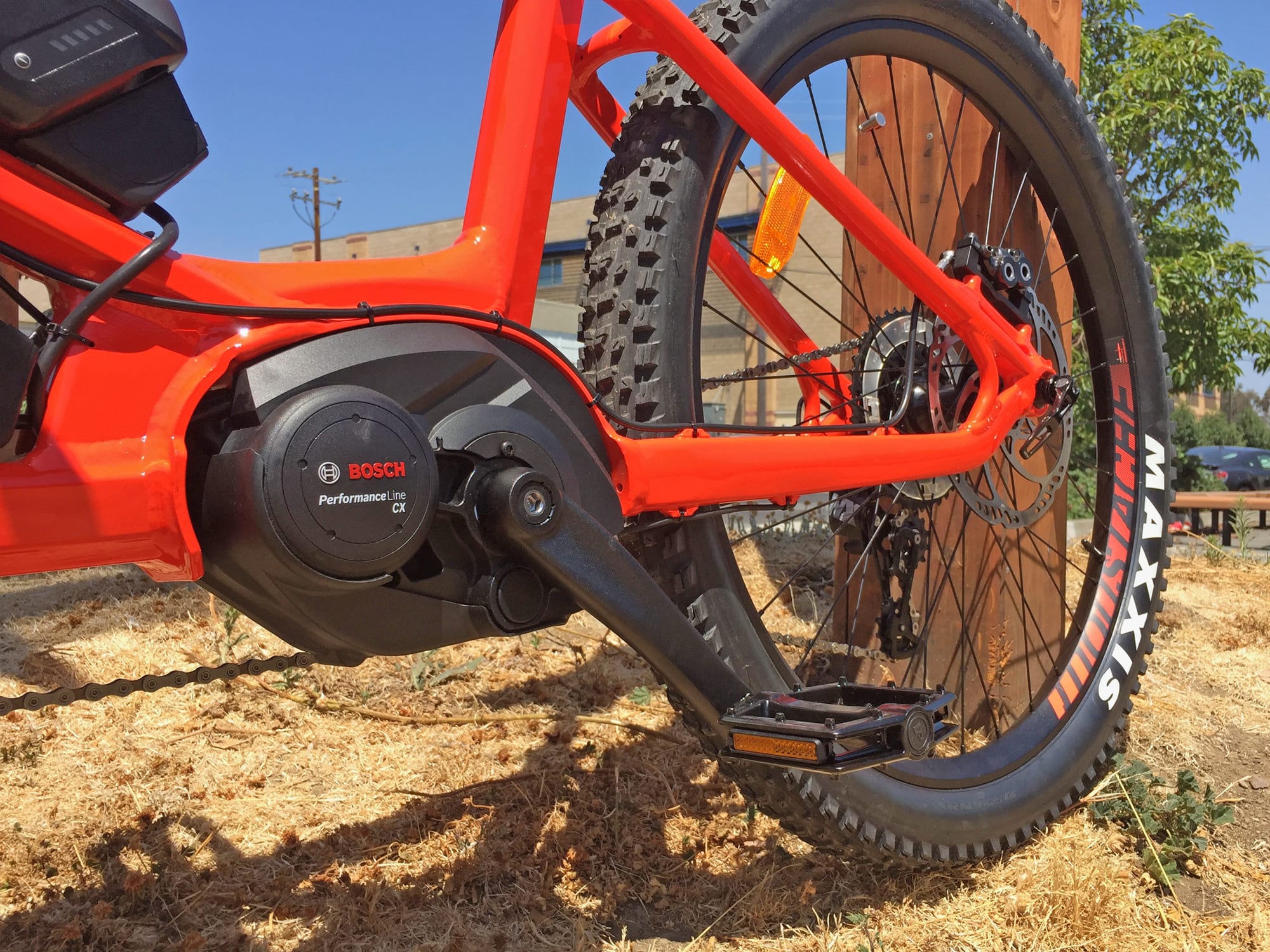
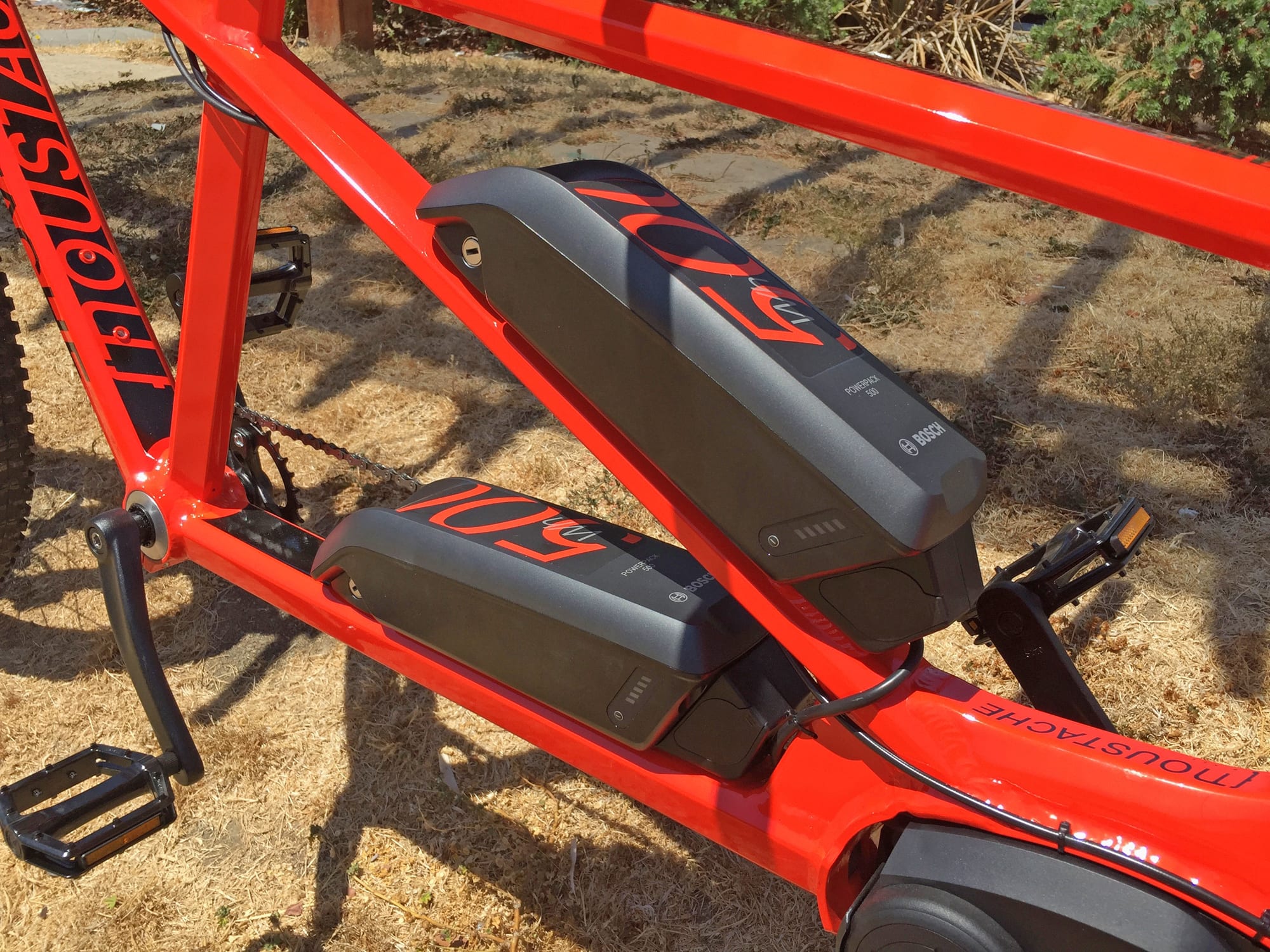
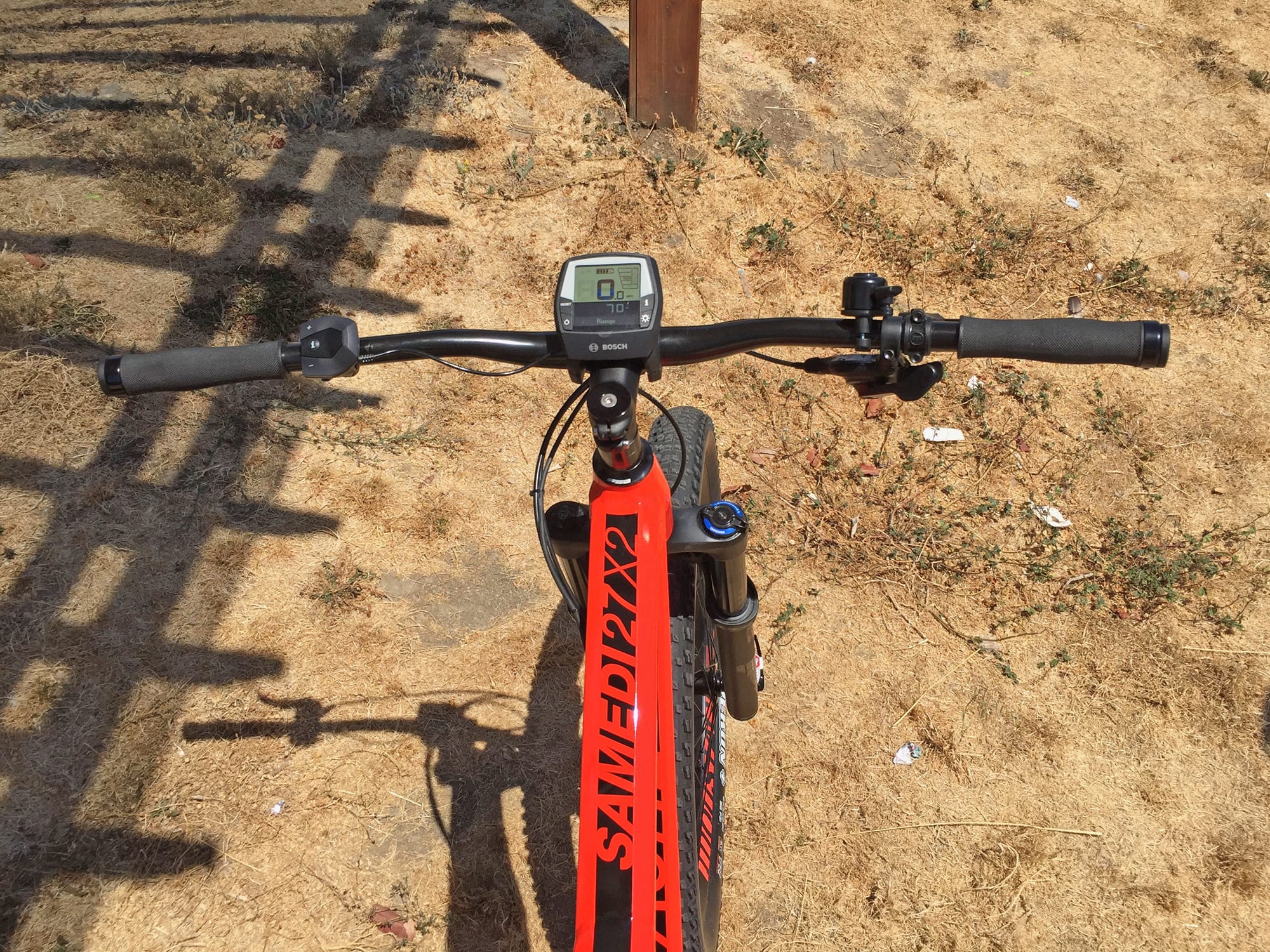
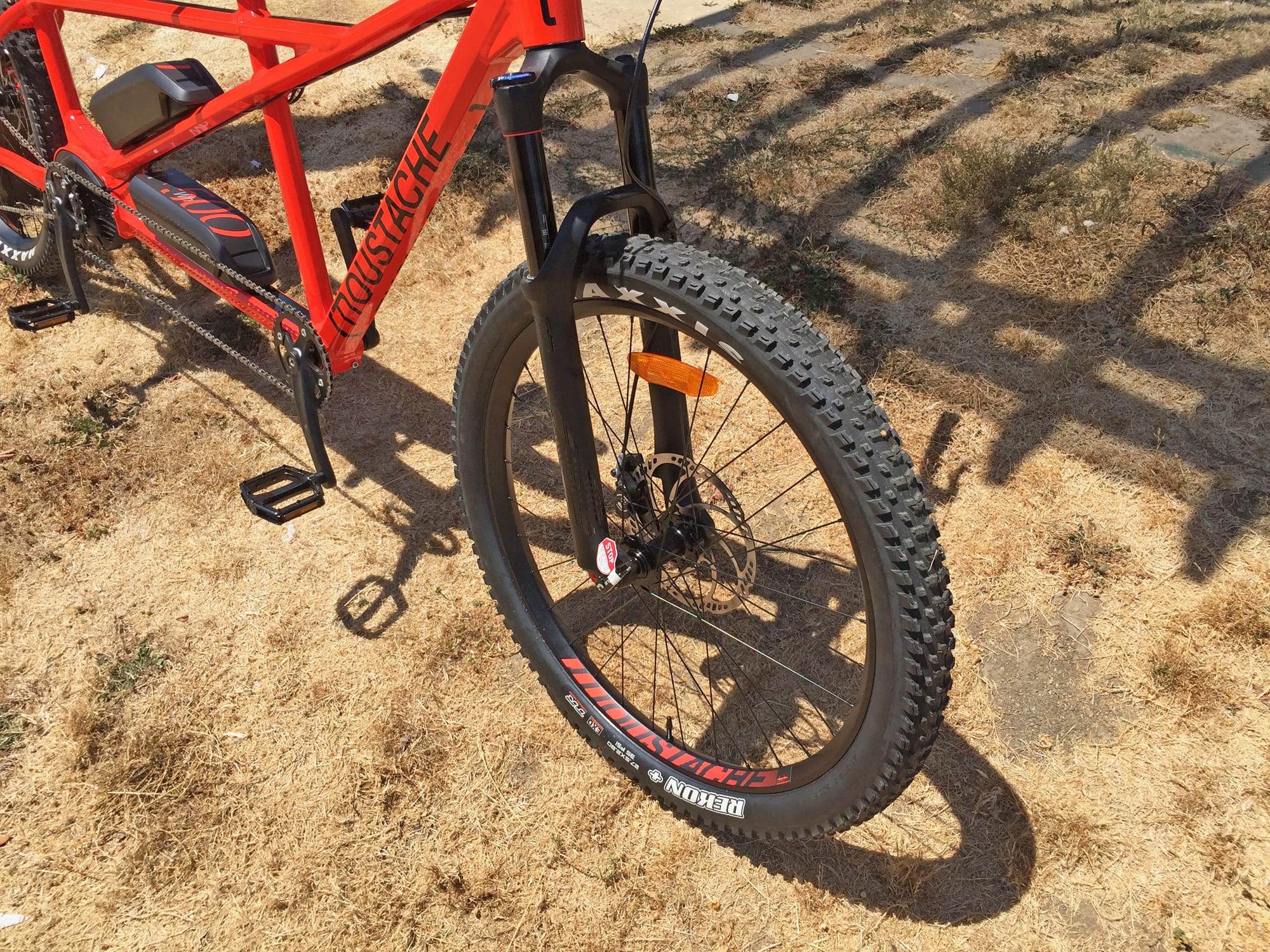
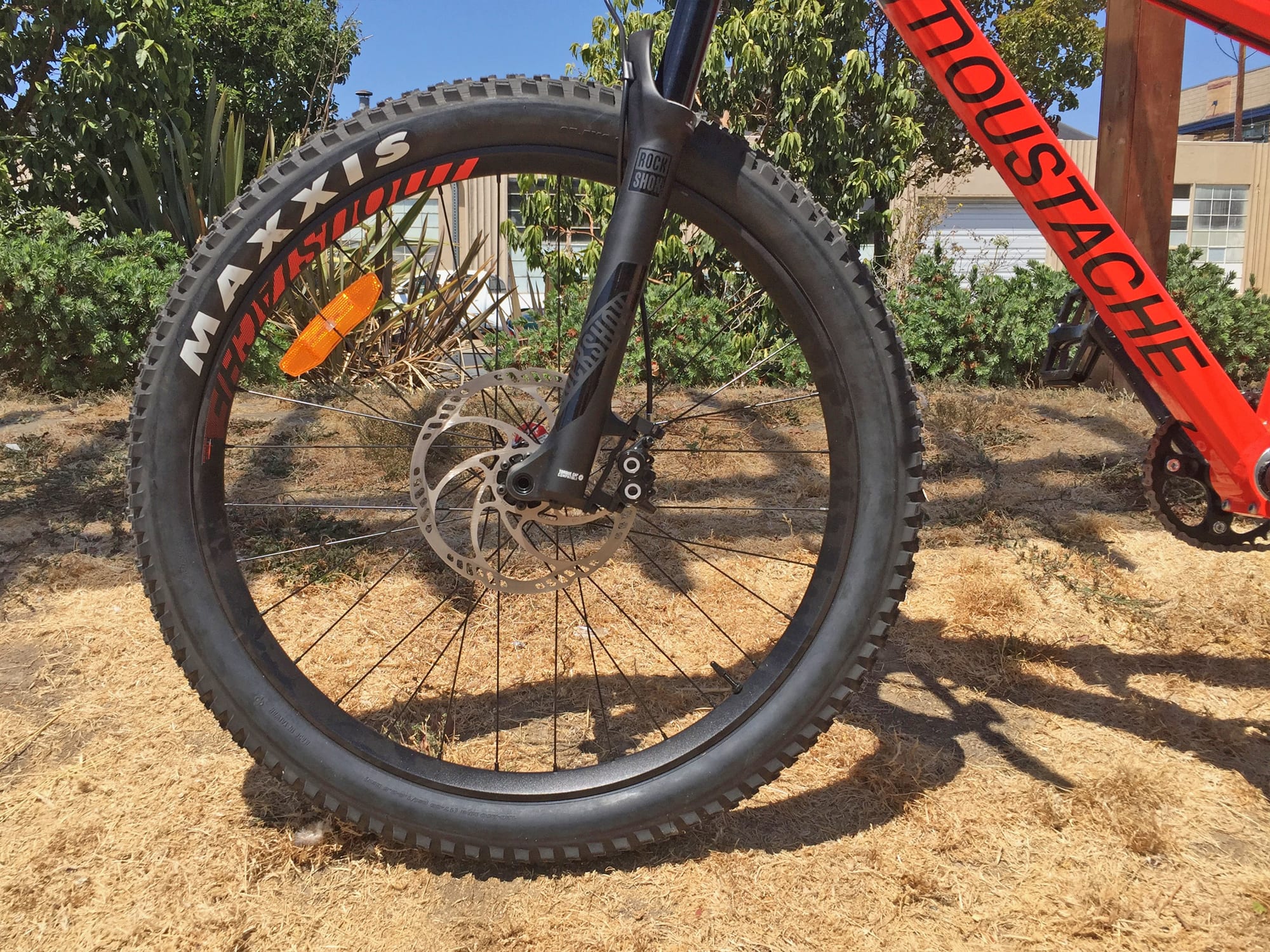

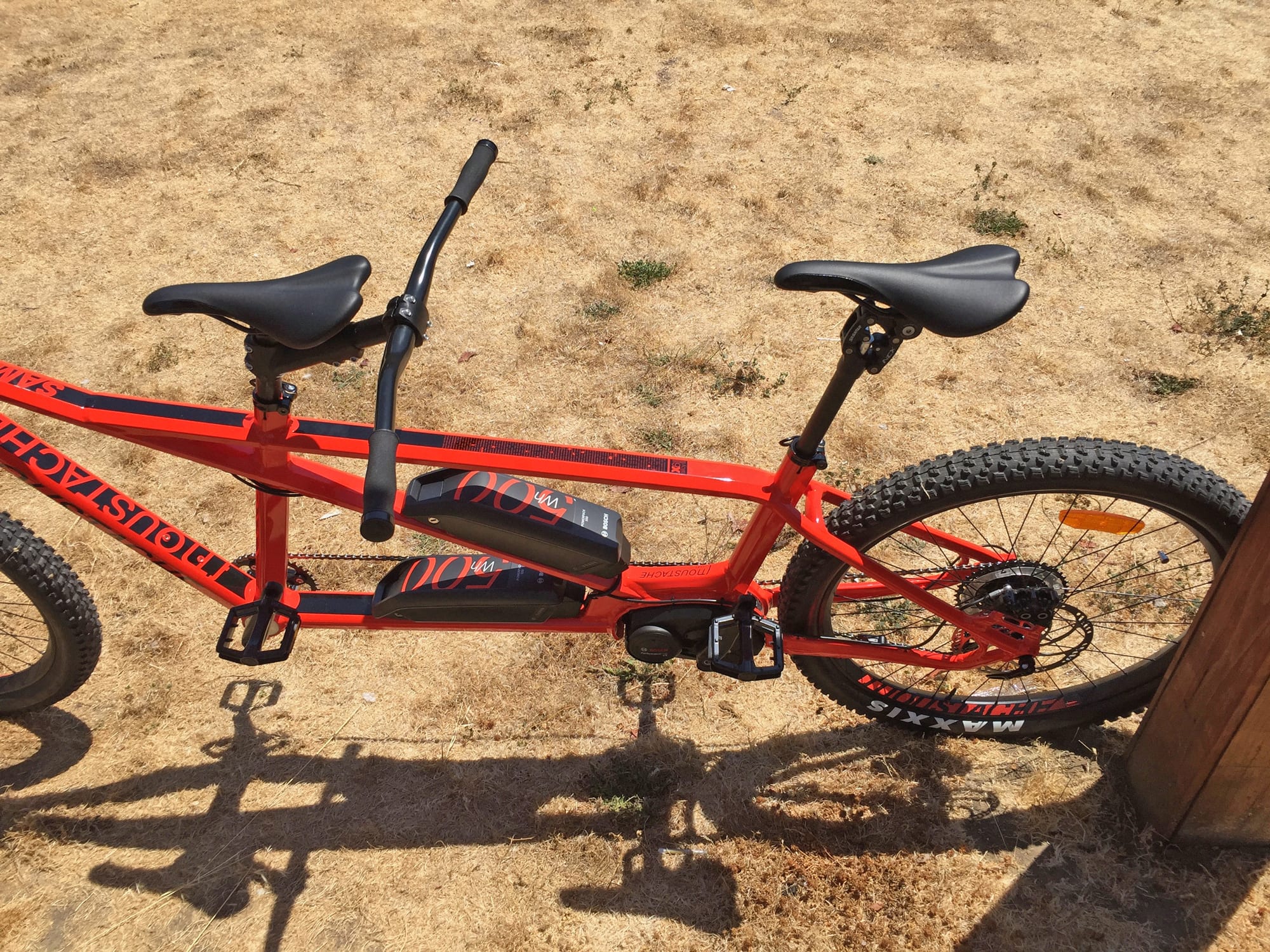
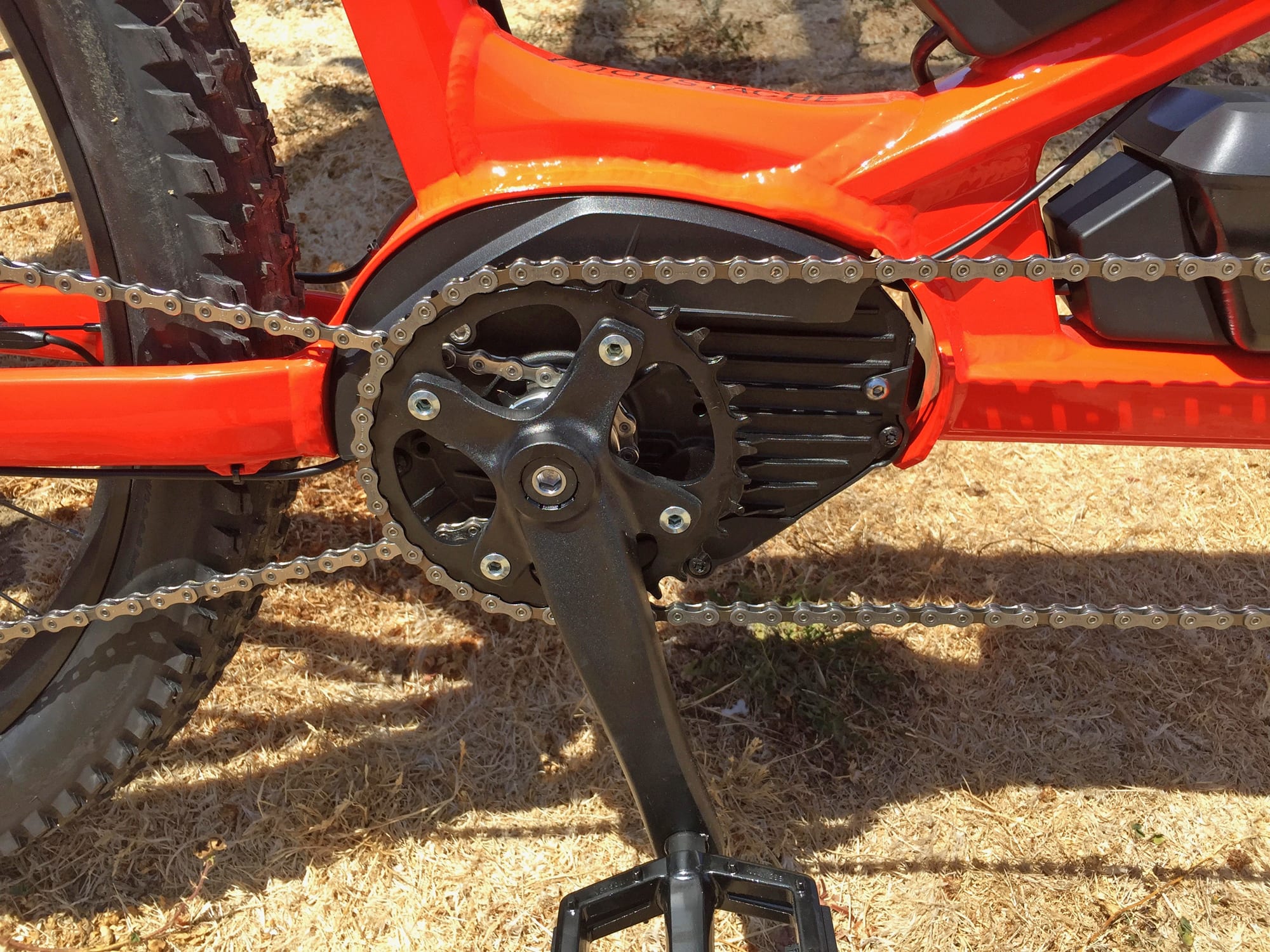


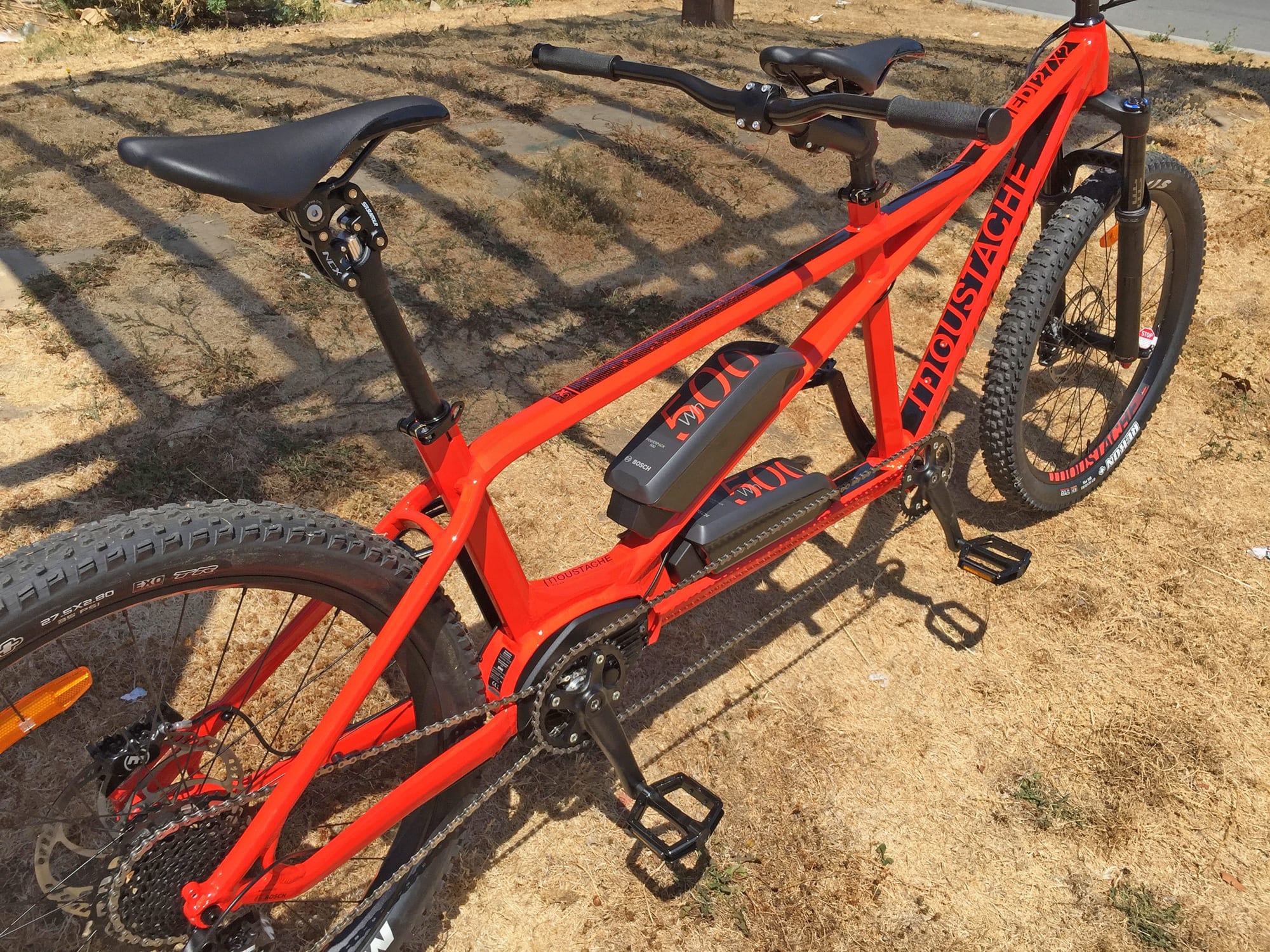


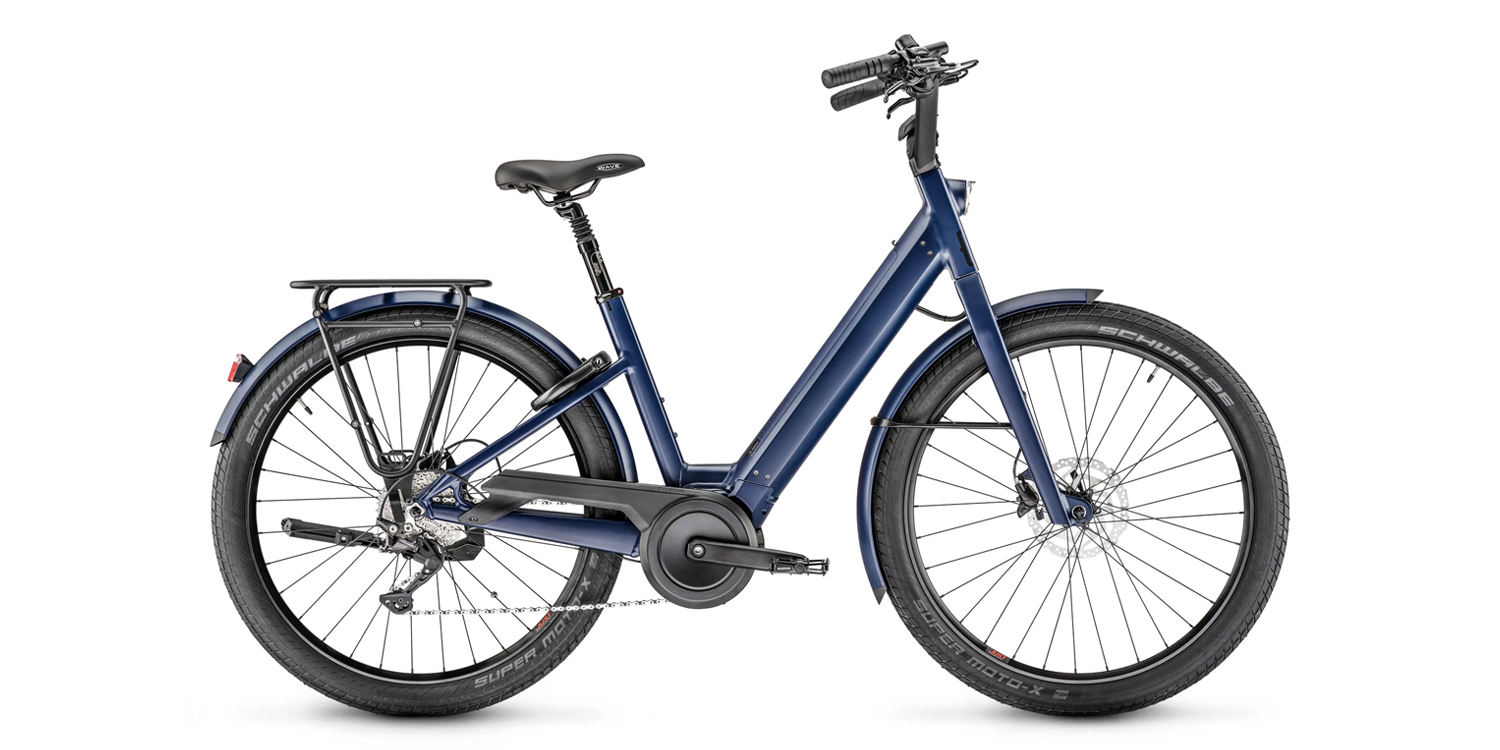

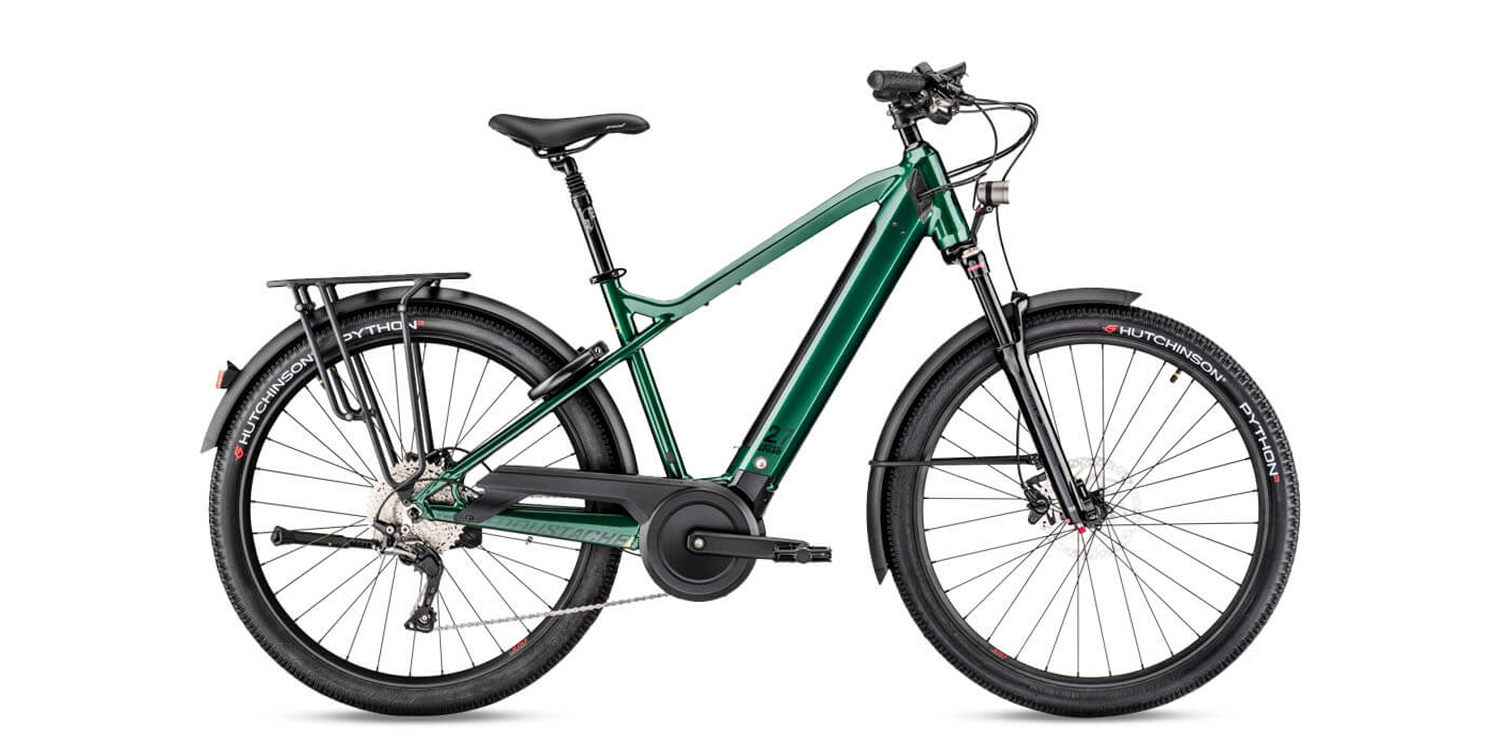
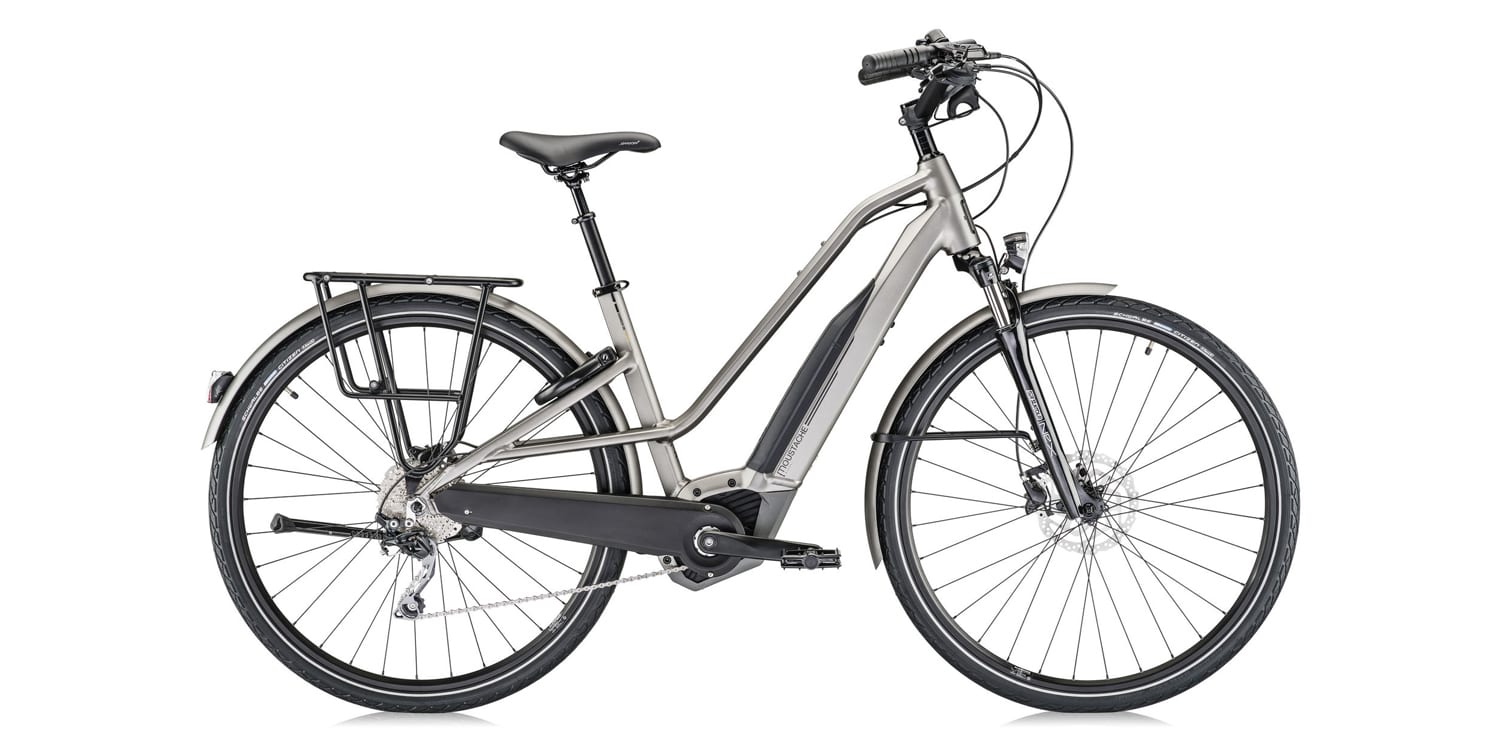
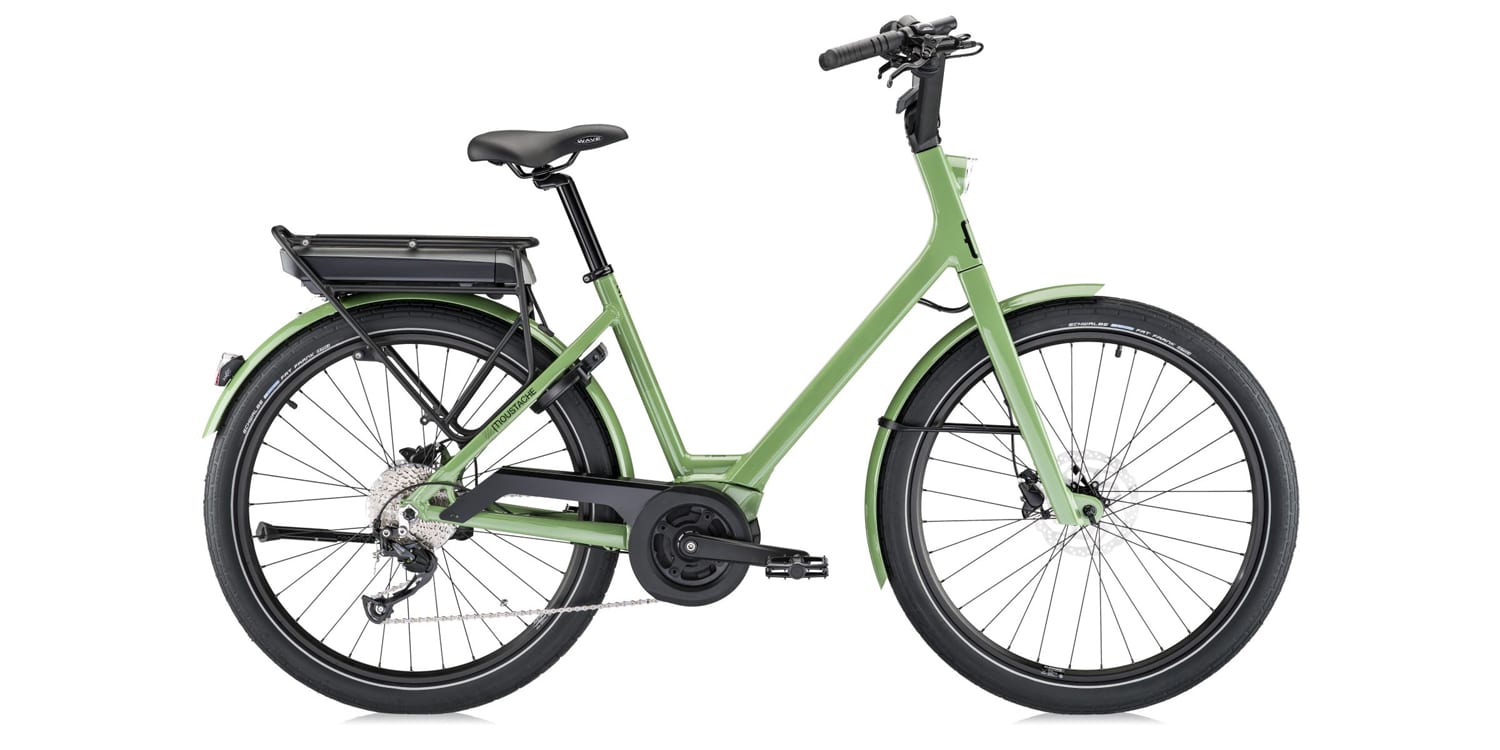
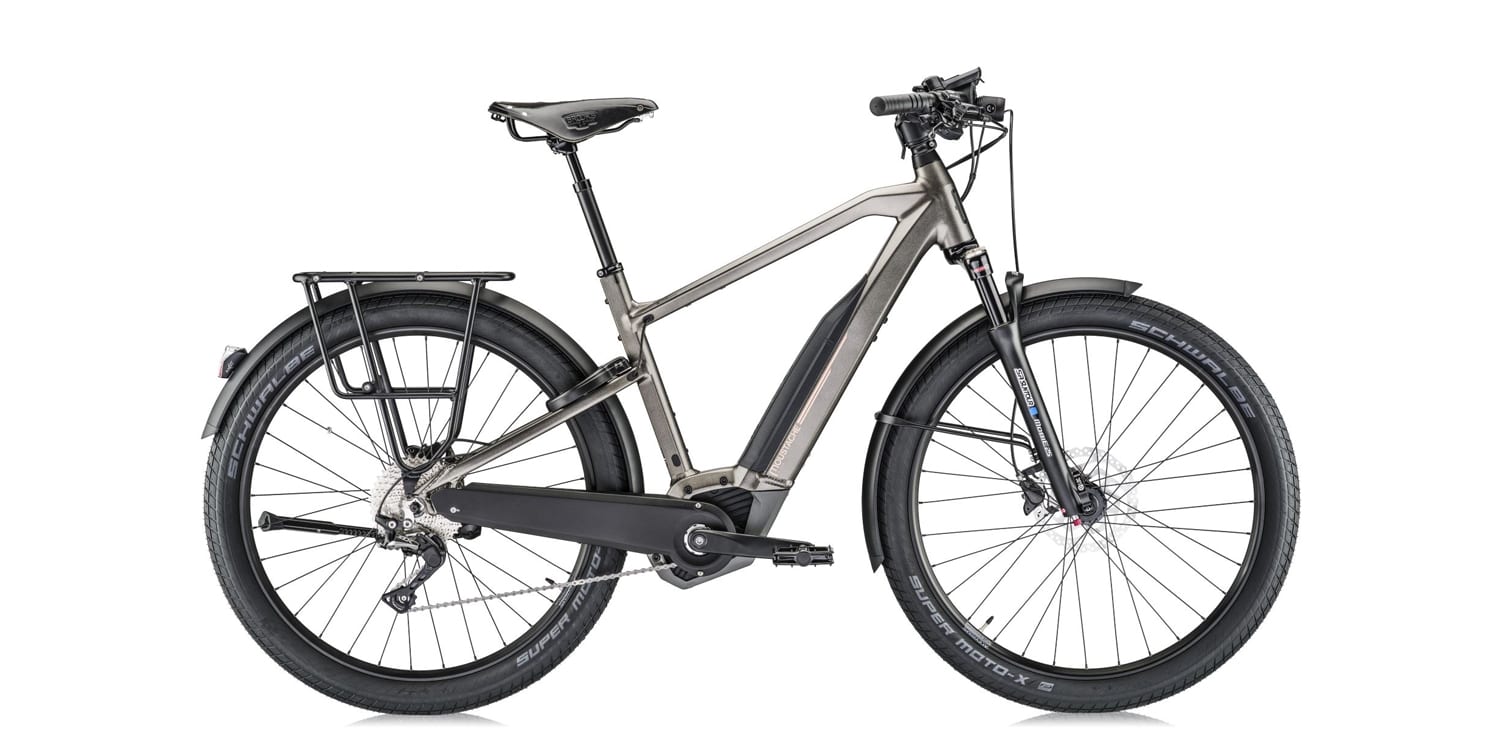
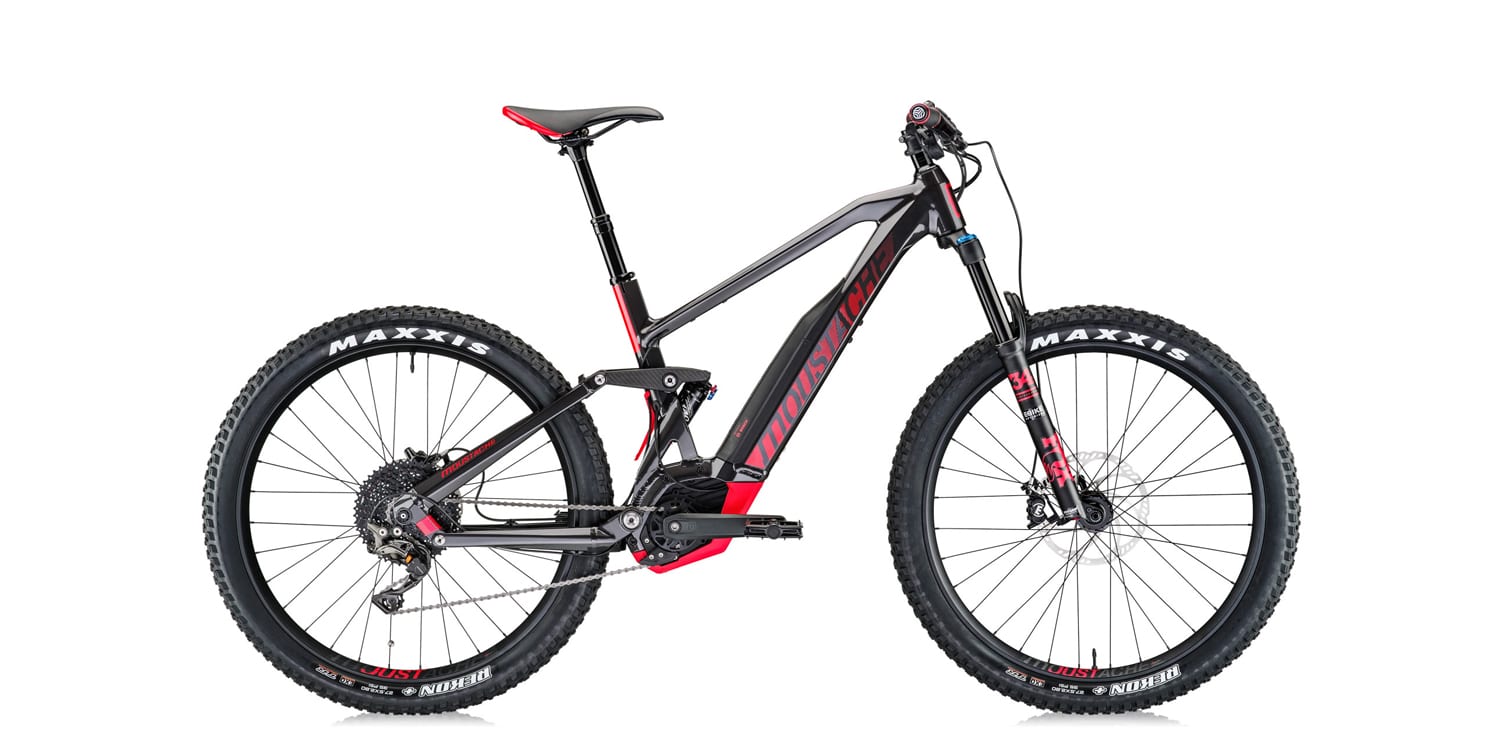


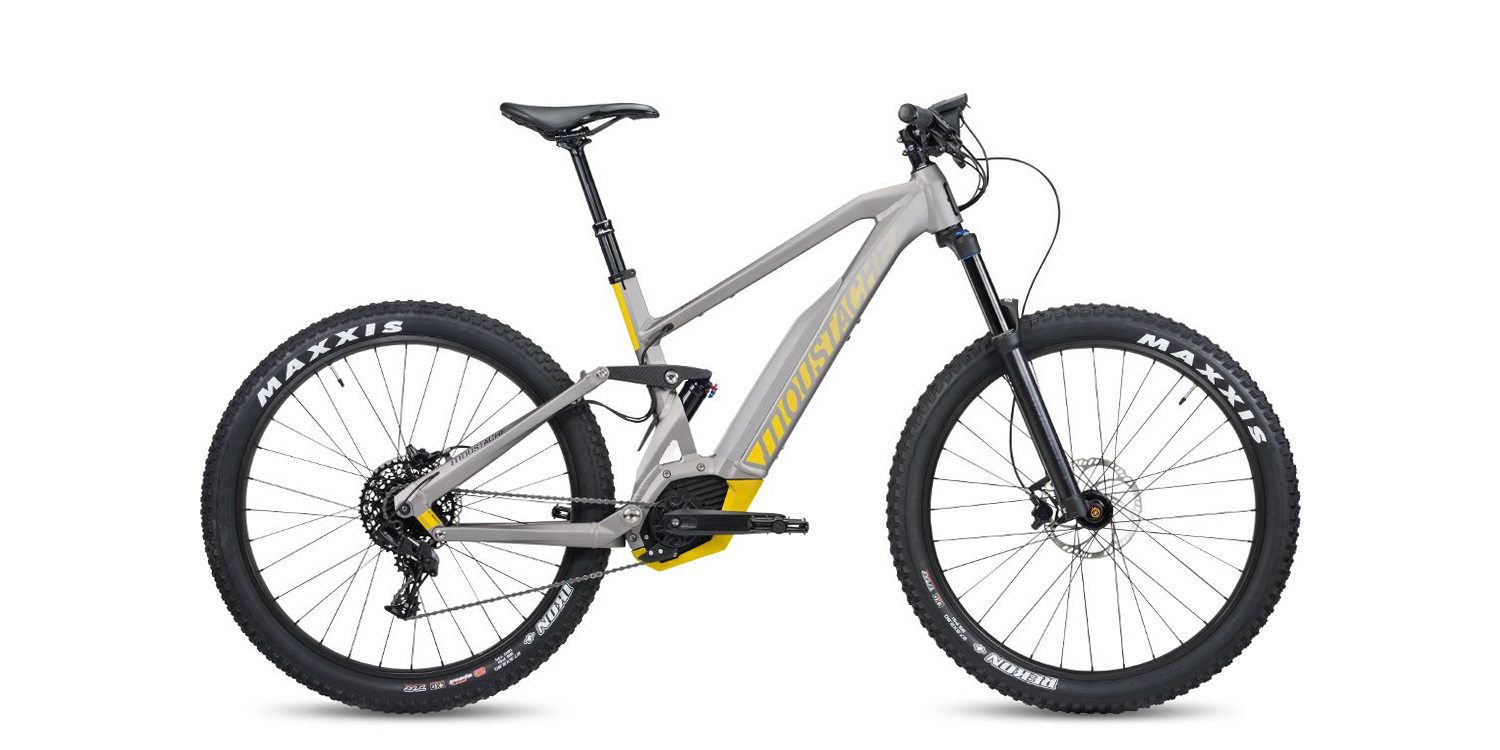
Reader Interactions